#Gertrude Gerson
Explore tagged Tumblr posts
Text

Captain Sol Gerson and Gertrude Holtorf share a kiss to welcome in the New Year at the Rainbow Room, December 31, 1939.
Photo: Bettmann Archives/Getty Images/Daily Mail
#vintage New York#1930s#New Year's Eve#Dec. 31#31 Dec.#kiss#Rainbow Room#celebration#party#vintage New Year's Eve
84 notes
·
View notes
Text
Your Elderly Representatives:
Gravity Falls - Stanley and Stanford Pines
Avatar: The Last Airbender - Uncle Iroh
Muppets - Statler and Waldorf
Lord of the Rings - Gandalf
Dream SMP - Philza Minecraft and Technoblade
Discworld - Granny Weatherwax and Nanny Ogg
Ace Attorney - Wendy Oldbag
Doctor Who - Wilfred Mott
The Magnus Archives - Gertrude Robinson
Batman - Alfred Pennyworth
Star Wars - Yoda
Critical Role - Chetney Pock O'Pea
Up - Carl and Ellie Fredrickson
The Owl House - Principal Hieronymus Bump
Just Roll With It - Old Man Earl
Splatoon - Captain Craig Cuttlefish and DJ Octavio
Half Life VR but the AI is Self Aware - Dr Harold Coomer and Bubby
Jojo's Bizzare Adventure - Joseph Joestar
Transformers - Ratchet
Cats - Old Deuteronomy
Rise of the Teenage Mutant Ninja Turtles - Splinter
DuckTales - Scrooge McDuck
Ninjago - Sensei Wu
Undertale - Gerson
Amphibia - Hop Pop
Golden Kamuy - Hijikata Toshizou
The Good Place - Michael
Back to the Future - Doc Brown
X-Men - Magneto and Professor X
Zero Escape - Tenmyouji
Genshin Impact - Zhongli
Five Nights at Freddy's - William Afton
Welcome to Night Vale - The Faceless Old Woman Who Secretly Lives in Your Home
Homestuck - Nanna Jane Egbert
Kingdom Hearts - Master Xehanort
The Adventure Zone - Merle Highchurch
RWBY - Maria Calavera
Hermitcraft - TinFoilChef
Full Metal Alchemist - Pinako Rockbell
Miss Marple - Miss Marple
Skullgirls - Black Dahlia
Yu Yu Hakusho - Genkai
Umbrella Academy - Five Hargreeves
Golden Girls - the Golden Girls
Breaking Bad - Mike Erhmantraut
Dimension 20 - Bishop Raphaniel Charlock
Final Fantasy - Emet-Selch
Warrior Cats - Yellowfang
One Piece - Dr Kureha
My Little Pony - Granny Smith
Spongebob Squarepants - Mermaid Man and Barnacle Boy
Stardew Valley - Grandpa
She-Ra and the Princesses of Power - Madame Razz
Bloodborne - Gehrman the First Hunter
Courage the Cowardly Dog - Muriel Bagge
Dragon Ball - Master Roshi
The Emperor's New Groove - Yzma
Mulan - Grandmother Fa
Death Note - Watari
Kung Fu Panda - Master Oogway
Christmas - Santa Claus
Plainview Discord Server - Funky Old
Token Tumblr Real Person - @theangstking 's cat, Lilly
Real Life Old Person - Betty White
EDIT: Results from all preliminaries have been updated
199 notes
·
View notes
Text

Gertrude Käsebier(1852-1934)
The silhouette, a study posed by the Gerson sisters in their Crinoline Ball costumes 1906
29 notes
·
View notes
Note
The Sci-fi Trio investigating a floating island.
So once G, Gaster and Green pinpoint the mobile island's current location, it turns out that the island isn't actually an island - but it's actually A GIANT TURTLE!!! 🐢🐢🐢
And Green ends up becoming attached 💚. They decide to call her Gertrud, after old man Gerson.
#franstastic answers#w.d. gaster#gaster#gaster!sans#g!sans#gaster!papyrus#g!papyrus#convergence au#headcanons
13 notes
·
View notes
Photo

Gertrude Käsebier – Studio portrait of the Gerson sisters in costume for the Crinoline Ball, 1906
171 notes
·
View notes
Text
THE MAN WHO CAME TO DINNER
March 27, 1950
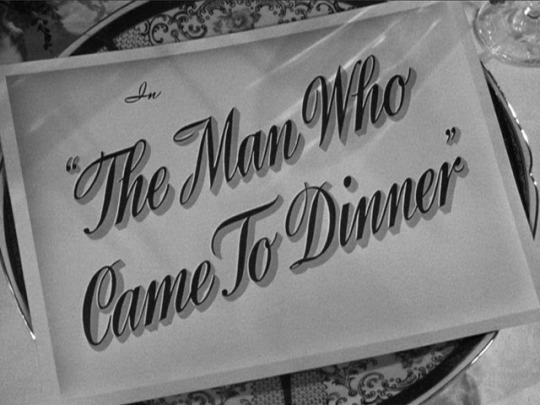
"The Man Who Came To Dinner” was a presentation of Lux Radio Theatre, broadcast on CBS Radio on March 27, 1950.

The Man Who Came to Dinner is a comedy in three by George S. Kaufman and Moss Hart. It debuted on October 16, 1939, at the Music Box Theatre in New York City, where it ran until 1941, closing after 739 performances. It then enjoyed a number of New York and London revivals.

The play was adapted for a 1942 feature film, scripted by Philip G. Epstein and Julius J. Epstein and directed by William Keighley. The film featured Monty Woolley, Bette Davis, Ann Sheridan, Billie Burke, Jimmy Durante, Mary Wickes and Richard Travis.
“The Man Who Came to Dinner” was previously presented on radio by Philip Morris Playhouse on July 10, 1942. Monty Woolley, who played the leading role in the film version, starred in the adaptation. It was broadcast again by Theatre Guild on the Air on ABC Radio November 17, 1946 starring Fred Allen. In 1949, “The Man Who Came to Dinner” was produced on “The Hotpoint Holiday Hour” starring Charles Boyer, Jack Benny, Gene Kelly, Gregory Peck, Dorothy McGuire, and Rosalind Russell.
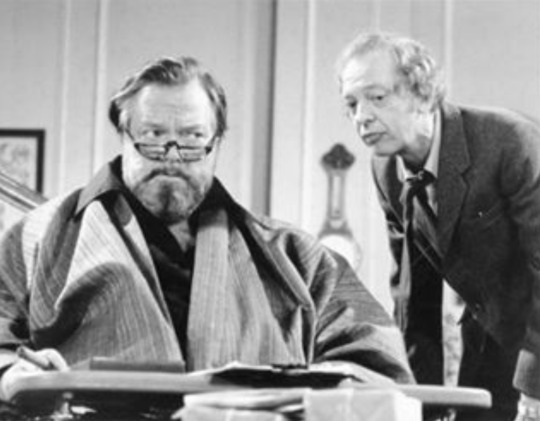
On October 13, 1954, a 60-minute adaptation was aired on the CBS Television series “The Best of Broadway.” A “Hallmark Hall of Fame” production was broadcast n November 29, 1972 starring Orson Welles, Lee Remick (Maggie Cutler), Joan Collins (Lorraine Sheldon), Don Knotts (Dr. Bradley), and Marty Feldman (Banjo). The 2000 Broadway revival was broadcast by PBS on October 7, 2000, three days after the New York production closed, and was also released on DVD.
Synopsis ~ The story is set in the small town of Mesalia, Ohio in the weeks leading to Christmas in the late 1930s. The outlandish radio wit Sheridan Whiteside is invited to dine at the house of the well-to-do factory owner Ernest Stanley and his family. But before Whiteside can enter the house, he slips on a patch of ice outside the Stanleys' front door and injures his hip. Confined to the Stanleys' home in a wheelchair, Whiteside and his retinue of show business friends turn the Stanley home upside down! But is he really injured?
This adaptation was written by S.H. Barnett. The characters eliminated for this adaptation include Richard Stanley, John, Mrs. Dexter, and Mrs. McCutcheon.
The show is hosted by William Keighley, who directed the 1942 film adaptation.

Lux Radio Theatre (1935-55) was a radio anthology series that adapted Broadway plays during its first two seasons before it began adapting films (”Lux Presents Hollywood”). These hour-long radio programs were performed live before studio audiences in Los Angeles. The series became the most popular dramatic anthology series on radio, broadcast for more than 20 years and continued on television as the Lux Video Theatre through most of the 1950s. The primary sponsor of the show was Unilever through its Lux Soap brand.
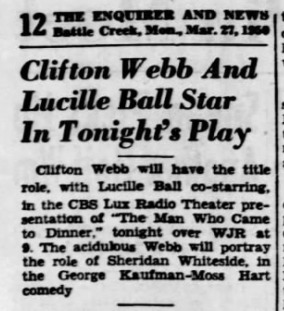
CAST
Lucille Ball (Maggie Cutler) was born on August 6, 1911 in Jamestown, New York. She began her screen career in 1933 and was known in Hollywood as ‘Queen of the B’s’ due to her many appearances in ‘B’ movies. “My Favorite Husband” eventually led to the creation of ��I Love Lucy,” a television situation comedy in which she co-starred with her real-life husband, Latin bandleader Desi Arnaz. The program was phenomenally successful, allowing the couple to purchase what was once RKO Studios, re-naming it Desilu. When the show ended in 1960 (in an hour-long format known as “The Lucy-Desi Comedy Hour”) so did Lucy and Desi’s marriage. In 1962, hoping to keep Desilu financially solvent, Lucy returned to the sitcom format with “The Lucy Show,” which lasted six seasons. She followed that with a similar sitcom “Here’s Lucy” co-starring with her real-life children, Lucie and Desi Jr., as well as Gale Gordon, who had joined the cast of “The Lucy Show” during season two. Before her death in 1989, Lucy made one more attempt at a sitcom with “Life With Lucy,” also with Gordon.
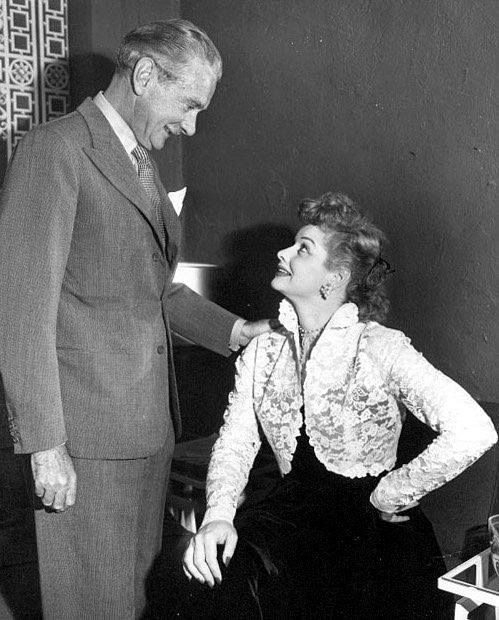
Clifton Webb (Sheridan Whiteside) had appeared with Lucille Ball in the 1946 film The Dark Corner. He was nominated for three Oscars. Webb had played the role of Sheridan Whiteside on stage for two years.
Eleanor Audley (Mrs. Stanley) appeared in several episodes of Lucille Ball’s “My Favorite Husband” as mother-in-law Letitia Cooper. Audley was first seen with Lucille Ball as Mrs. Spaulding, the first owner of the Ricardo’s Westport home in “Lucy Wants to Move to the Country” (ILL S6;E15). She returned to play one of the garden club judges in “Lucy Raises Tulips” (ILL S6;E26). Audley appeared one last time with Lucille Ball in a “Lucy Saves Milton Berle” (TLS S4;E13) in 1965.
Ruth Perrott (Sarah) played Katie the maid on Lucille Ball’s radio show “My Favorite Husband.” On “I Love Lucy” she played Mrs. Pomerantz in “Pioneer Women” (ILL S1;E25), was one of the member of the Wednesday Afternoon Fine Arts League in “Lucy and Ethel Buy the Same Dress” (ILL S3;E3), and played a nurse when “Lucy Goes to the Hospital” (ILL S2;E16).
Betty Lou Gerson is best remembered as the voice of Cruella De Ville in the original Disney film One Hundred and One Dalmatians (1961).
Stephen Dunn had appeared with Lucille Ball in Miss Grant Takes Richmond (1949).
John Milton Kennedy (Announcer)
‘DINNER’ TRIVIA
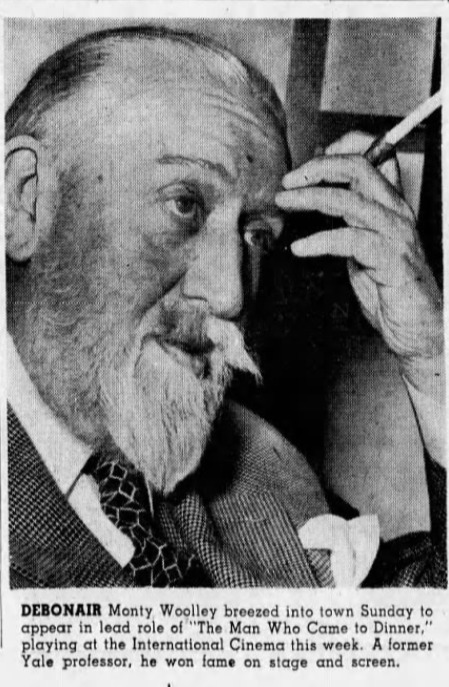
The same date as this radio adaptation (March 27, 1950), original star Monty Wooley arrived in Vancouver to perform in the play.

This broadcast aired the day after the “My Favorite Husband” episode “Liz’s Radio Script” also starring Lucille and Ruth Perrott.

Lucille Ball’s good friend and frequent co-star Mary Wickes was typecast as a nurse due to her breakthrough role as Nurse Preen in the Broadway, film, and television versions of The Man Who Came To Dinner.’ She does not play Nurse Preen in this adaptation. The character is given the first name Geraldine.
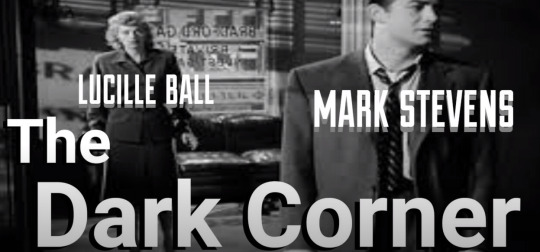
Lucille Ball previously appeared on “Lux Radio Theatre” for a November 10, 1947 adaptation of her film The Dark Corner (1946).
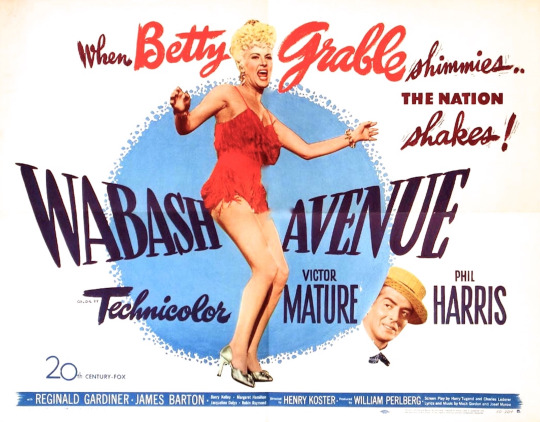
The first commercial talks about how Lux soap is gentle on stockings, like those worn by Betty Grable in Wabash Avenue.

The second commercial (between acts two and three) interviews actress Joan Miller, talking about the Warners picture Stage Fright, and how Lux helped keep the costumes looking great.

In the post show interviews, Clifton Webb promotes his next film Cheaper By The Dozen.

The final Lux commercial talks about how movie star Hedy Lamarr uses Lux.

The program presents a special address from president of the Red Cross, General George C. Marshall. The American Red Cross was mentioned on “My Favorite Husband” and Red Cross posters were frequently scene decorating the sets on “I Love Lucy.”
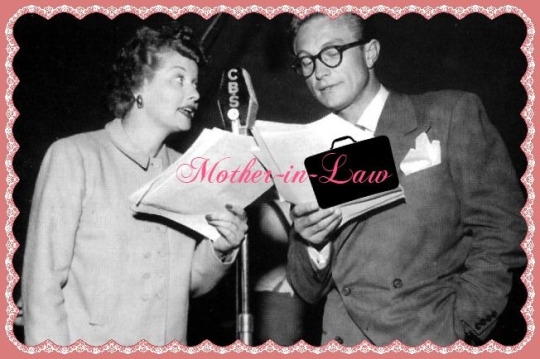
The ending of radio’s “My Favorite Husband” episode “Mother-in-Law” (November 4, 1949) starring Lucille Ball is identical to the ending of The Man Who Came To Dinner.

In “Lucy and Viv Reminisce” (TLS S6;E16) on January 1, 1968, while nursing Lucy, who has a broken leg, Viv slips and also breaks her leg. She says she feels just like a female version of The Man Who Came To Dinner.
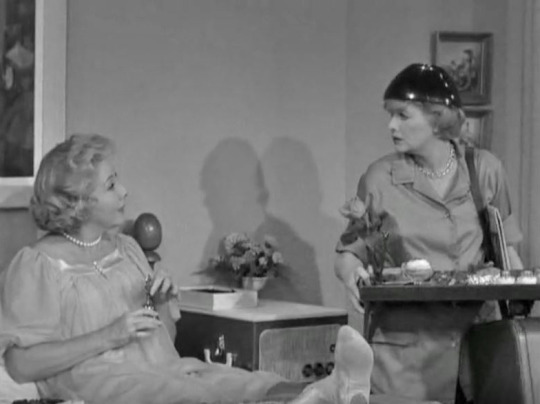
“Vivian Sues Lucy” (TLS S1;E10) on December 3, 1962 also has a plot that resembles The Man Who Came To Dinner. Viv injures herself due to Lucy’s careless housekeeping, and is bedridden. Lucy goes out of her way to cater to her every whim, so that she won��t sue!
Although the play is fictional, it draws on real life figures and events for its inspiration.
Sheridan Whiteside was modeled on Alexander Woollcott.
Beverly Carlton was modeled on Noël Coward.
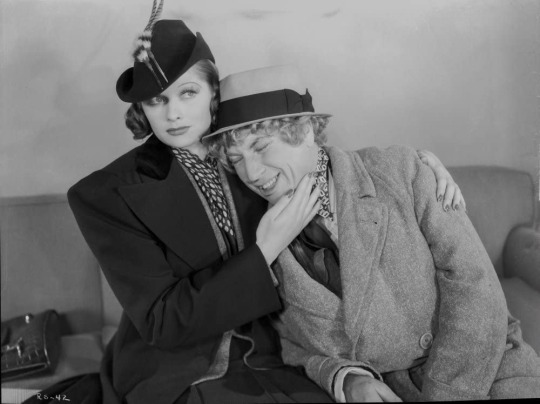
Banjo was modeled on Harpo Marx, and there is a dialogue reference to his brothers Groucho and Chico. When Sheridan Whiteside talks to Banjo on the phone, he asks him, "How are Wackko and Sloppo?"
Professor Metz was based on Dr. Gustav Eckstein of Cincinnati (with cockroaches substituted for canaries), and Lorraine Sheldon was modeled after Gertrude Lawrence.
The character of Harriet Sedley, the alias of Harriet Stanley, is an homage to Lizzie Borden. The popular jump-rope rhyme immortalizing Borden is parodied in the play.

Radio critic Dick Diespecker was not exactly enthusiastic about this adaptation.
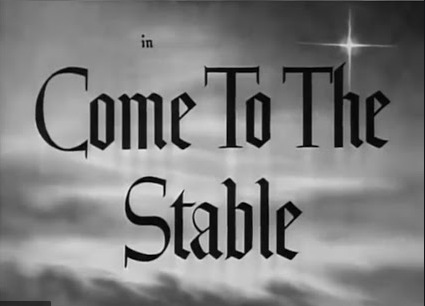
The announcer reminds viewers that next week “Lux Radio Theatre” will present “Come To the Stable” starring Loretta Young and Hugh Marlowe
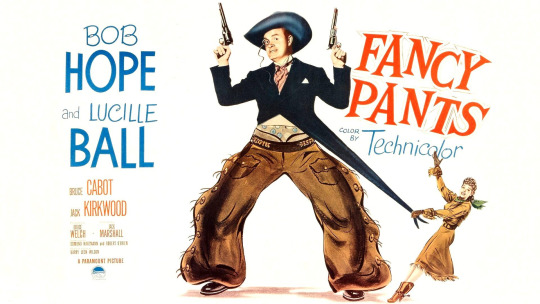
The announcer promotes Lucille Ball’s new picture Fancy Pants starring Bob Hope.
#Lucille Ball#The Man Who Came To Dinner#Clifton Webb#Eleanor Audley#My Favorite Husband#Ruth Perrott#Red Cross#Betty Lou Gerson#Hedy Lamarr#Betty Grable#Kaufman and Hart#Fancy Pants#Lux Radio Theatre#Lux#William Keighley
7 notes
·
View notes
Photo

Casper and Gertrude Gerson were my husband’s (William Kanefsky) maternal grandparents. Casper marched in the very first Gimbel’s Thanksgiving day parade in 1920.
#submission#Mount Carmel Cemetery#William Kanefsky#Casper Gerson#Gertrude Gerson#Gimbel's#Thanksgiving Day Parade#1920#Jewish#Jewish History
0 notes
Text
Aashdhhfjdksjak thank u!!!! Her name is Gertrude and she’s gerson from undertale’s granddaughter. She made her hammer herself

Loeve how this character looks.. so much
@the-worm-man
11 notes
·
View notes
Text
The Moral Hole
Morals clauses aren’t exactly new when it comes to contracts. They’ve been the norm in entertainment and top executive contracts for a long time, just in case the person you bankrolled and relied upon gets caught in flagrante delecto. But not so much in the pedestrian contracts of ordinary writers. As Judith Shulevitz notes, they are now.
Authors are people, often flawed. Sometimes they behave badly. How, for instance, should publishers deal with the #MeToo era, when accusations of sexual impropriety can lead to books being pulled from shelves and syllabuses, as happened last year with the novelists Junot Díaz and Sherman Alexie?
“Often” may be an understatement, not so much that it’s exclusive to writers, but that “to err is human,” and most authors are, arguably, human (Christopher Hitchens excepted, obviously).
One answer is the increasingly widespread “morality clause.” Over the past few years, Simon & Schuster, HarperCollins and Penguin Random House have added such clauses to their standard book contracts. I’ve heard that Hachette Book Group is debating putting one in its trade book contracts, though the publisher wouldn’t confirm it. These clauses release a company from the obligation to publish a book if, in the words of Penguin Random House, “past or future conduct of the author inconsistent with the author’s reputation at the time this agreement is executed comes to light and results in sustained, widespread public condemnation of the author that materially diminishes the sales potential of the work.”
As should be obvious, this doesn’t come about because authors have changed. Rather, times have changed, as has the “public condemnation” of anybody who catches the mob’s attention. When that happens, a writer goes from acceptance, if not adoration, to pariah in a flash. More importantly, the publisher’s investment goes down the toilet.
This past year, regular contributors to Condé Nast magazines started spotting a new paragraph in their yearly contracts. It’s a doozy. If, in the company’s “sole judgment,” the clause states, the writer “becomes the subject of public disrepute, contempt, complaints or scandals,” Condé Nast can terminate the agreement. In other words, a writer need not have done anything wrong; she need only become scandalous. In the age of the Twitter mob, that could mean simply writing or saying something that offends some group of strident tweeters.
Did the writer do it? What did they do? What if they didn’t actually do anything, or whatever they did (and whenever they did it) was entirely acceptable and ordinary at the time, but now, in the light of outrage, the writers becomes the “subject of public disrepute”? At least the Condé Nast version has the integrity to leave in the company’s “sole judgment,” making it plain that there is no connection between the writer, the mob and the termination.
But how, you might ask, could anyone be antagonistic to morality? Are we not moral. Isn’t being moral a good thing? Much as “morality” makes for great discussions among philosophers and academics, it’s one of those wonderful words that means everything and nothing. Most of us have a “moral compass,” but it’s our own and, even when similar to others, usually differs in the particulars. There is no Board of Morality, establishing the morality norms to which every individual is compelled to adhere. Even when we agree on the big picture, the details rarely coincide.
Agents hate morality clauses because terms like “public condemnation” are vague and open to abuse, especially if a publisher is looking for an excuse to back out of its contractual obligations.
But that’s exactly why morals clauses are included in contracts, to give publishers a back door, an escape hatch, when a popular writer becomes an overnight outcast. For writers, the problem is that they make a living writing, and if they write something controversial, thoughtful but not in conformity with what the mob wants to read, they stop making money. Even writers have to eat.
Jeannie Suk Gersen, a Harvard Law School professor who writes regularly for The New Yorker, a Condé Nast magazine, read the small print, too, and thought: “No way. I’m not signing that.” Ms. Gersen, an expert in the laws regulating sexuality, often takes stands that may offend the magazine’s liberal readers, as when she defended Education Secretary Betsy DeVos’s rollback of Obama-era rules on campus sexual-assault accusations. When I called Ms. Gersen in November, she said, “No person who is engaged in creative expressive activity should be signing one of these.”
But Gerson gets a paycheck that says “Harvard” on it, so if she rejects a contract with a morals clause, she won’t miss a meal. What about writers who rely on their writing to eat?
It’s not that a company should have to keep on staff a murderer or rapist, she added. But when the trigger for termination could be a Twitter storm or a letter-writing campaign, she said, “I think it would have a very significant chilling effect.”
That first sentence includes some serious Gertruding. If someone on staff was a “murderer or rapist,” wouldn’t they be prosecuted, convicted, sentenced, and hence unavailable for writing for life plus cancer? Because if they aren’t convicted, how does one assert that the staff member is a “murderer or rapist”? These are crimes, and the way we know a crime occurred and someone committed it is through a system that results in a conviction.
So if an author’s meal ticket is subject to being pulled based on a twitstorm, and if a twitstorm can arise for good reason or no reason, subject to the whims of the unduly passionate, would a writer be inclined to express any opinion that might inflame the mob?
Regardless of how certain you are as to what is, or isn’t, moral, is the new morality expressing no thought that might bring you into “public disrepute” for being literally awful? Or is your flavor of morality defined by whatever your followers on twitter tell you it is?
The Moral Hole republished via Simple Justice
0 notes
Text
23 Decorates From Art History That Accurately Reflect Your Current Mood
Sometimes, it’s Monday. And on Mondays, most of us are just barely harbouring on, freshly mourning the loss of the weekend whilst peering into the void that is another five-day act week. But fret not, you’re not alone. Because people have always hated Mondays.
What, you don’t envisage the idle picnickers of the 19 th century knew Sunday Sads? You don’t ponder the naked muses of yesteryear were #unimpressed with their 7 a. m. fear? You don’t see Gertrude Stein disliked rolling into her table after 2 day of hard partying? Well, they did.
Behold, 23 depicts from art record that accurately manifest your current mood.
TFW you precisely can’t .
Wikimedia
Wojciech Gerson, “The Rest, ” 1895
People at work are all, “It’s spring! ” and you’re like, bitch, it’s Monday .
Wikimedia
Lawrence Alma-Tadema, “The Roses of Heliogabalus, “1 888
You under your desk rn .
Wikimedia
Heinrich Vogeler, “Martha Vogeler und Paula Modersohn-Becker im Garten schlafend, ” circa 1904
We are all Madame Meerson and her daughter .
Wikimedia
Mary Cassatt, “Madame Meerson and Her Daughter, ” 1899
When shit’s going down but you’re too tired to even care.
Wikimedia
Giovanni Battista Tiepolo, “Rinaldo Enchanted by Armida, ” 1742 -1 745
Egon’s not “here” right now, try him on Thursday .
Wikimedia
Egon Schiele, “Self-Portrait with Striped Sleeves, “1 915
Some parties are impounding the day but your look is literally blue-blooded .
Wikimedia
Henri de Toulouse-Lautrec, “At the Moulin Rouge, “1 892 -9 5
Have you posted a dramatic selfie with a skeleton forearm today ?
Wikimedia
Edvard Munch, “Self-Portrait, ” 1895
When everyone’s gchatting you and all you want to do is listen to Kesha .
Wikimedia
William-Adolphe Bouguereau, “The Invasion, “1 892
Because today’s time: undesirable.
Wikimedia
Francisco Goya, Self-portrait, 1796 -1 797
That instant when you’ve contacted maximum capacity for caring .
Wikimeida
Simon Glcklich( 18631943 ), “Paar im Gesprch”
On a happiness magnitude of one to 10, she’s sleeping-with-her-eyes-open .
Wikimedia
Berthe Morisot, “The Mother and Sister of the Artist, ” 1869 -1 870
People are possibly having a good time somewhere, but you’re not .
Wikimedia
Vittorio Reggianini, “Rococo , ” 1938
Gertrude’s reply is “no” to whatever you hanker or need today .
Wikimedia
Flix Vallotton, “Portrait ofGertrude Stein, ” 1907
7-6-5-4-3-2-No .
Wikimedia
Edgar Degas, “Caf Singer, ” 1878
Some beings are beautiful daydream shepherdesses today, and other beings are that goat .
Wikimedia
Franois Boucher, “Dreaming Shepherdess, “1 763
Nick, just now, recognized he’s in the wrong classroom .
Wikimedia
Rembrandt, “The Anatomy Lesson of Dr. Nicolaes Tulp, “1 632
Just guess what this gesticulate intends. John is not messing around today .
Wikimedia
Leonardo da Vinci, “Saint John the Baptist, “1 513 -1 516
That minute when you realise your hobby horse won’t choose Monday. Sorry, Jean .
Wikimedia
Claude Monet, “Jean Monet on his Hobby Horse, “1 872
None of us are these people .
Wikimedia
Judith Leyster, “Merry Trio/ Merry Company, “1 629 -1 631
OK, so, it’s not that bad .
Wkimedia
Vincent van Gogh, “Sorrowing old man( At Eternity’s Gate ), ” 1890
Just five more daylights until the weekend .
Wikimedia
Artemisia Gentileschi, “Conversion of the Magdalene( The Penitent Mary Magdalene ), “1 615 -1 616 or 1620 -1 625
Every so often, HuffPost Arts& Culture attempts to bring to light a few forgotten masterpieces with our light-hearted are looking at artwork biography. For past precedents witness here, here, here, here, here, here, here, here, here, here, here and here .
Read more: http://ift.tt/hFWySe
The post 23 Decorates From Art History That Accurately Reflect Your Current Mood appeared first on caredogstips.com.
from WordPress http://ift.tt/2ucPQzf via IFTTT
0 notes
Photo

Gertrude Käsebier – Studio portrait of the Gerson sisters in costume for the Crinoline Ball, 1906
5 notes
·
View notes